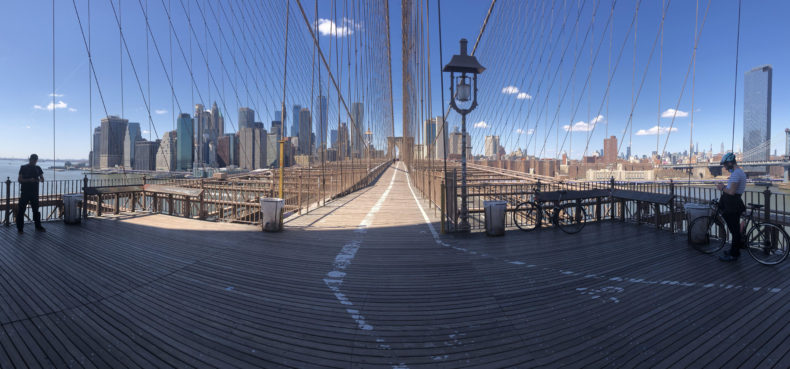
People who have come to visit say that it is quiet here. Now it is even quieter. Fewer car drive by, fewer planes fly overhead. In the hour before dawn I no longer hear the train whistle. My neighbor used to leave early each morning for dental school, 50 miles away. Now there is no hum-and-rumble that is a Subaru engine starting up.
At first, I didn’t even notice these sounds were gone. What I noticed were the birds. So many birds. They started up around 5, around the same time, I understand now, as flights and train whistles and people heading off to early-morning destinations.
This new quiet has opened up soundscapes that we haven’t heard before. Andreas von Bubnoff, a journalist and professor based in Germany and New York, is listening in. (I know Andreas through SciLance, a group of science writers that has been meeting up online for 15 years.) He is the co-founder of the Pandemic Silence Project, which is collecting sound recordings from around the world to capture the soundscapes of the pandemic.
Andreas grew up in Germany next to a forest and spent time hiking with his family. He still remembers the sounds: the soothing rustle of wind through the leaves, the buzz of insects in Alpine meadows, the calls of birds like the Eurasian skylark. His first big soundscape project was a multimedia project on soundscape ecology, for the German publication Frankfurter Allgemeine Zeitung in 2015. The project captured the sounds of nature on land and in the water, as well as human sounds that have drowned them out. “We often aren’t even aware that many sounds disappeared because we don’t remember the sounds having been there in the first place,” he says. “Perhaps the current pandemic silence is a big chance for many of us to learn how to listen again.”
Some of the sounds that the Pandemic Silence Project has already received show how much there may be to hear. A person in an urban suburb of Boston now hears coyotes; a recording of a Brooklyn neighborhood at 4 a.m. blends sirens and birdsong. “It’ll be interesting whether that’s only because of noise around us disappearing or whether some of these animals are venturing back into the areas where humans are because we’re less noisy,” Andreas says.
New human-generated symphonies are being created, too. One recording from Tunisia has the sound of a military helicopter enforcing quarantine thumping alongside the call to prayer being broadcast from a nearby mosque. Andreas says that some people might better notice what’s present because of the new absence of continual low-level noise. The roar of single plane stands out now in emptier skies.
Initially, the Pandemic Silence Project was only going to collect examples of the effect of a quieter global soundscape, and then later compare it to the “normal” soundscape. Then they realized this was too simplistic, as this looks at silence as simply the absence of noise, rather than as a quality of a particular place and time. These different silences, as well as interior soundscapes, will now be incorporated into the overall project, which will likely be a multimedia piece either online or in-person.
Here’s the pitch part of this post: Andreas would love to gather even more sounds for the Pandemic Silence Project. You can send your pandemic soundscapes, and your thoughts and feelings about them here. (You can also submit anonymously if you’d prefer to.) “We’re pretty much open to any type of sound,” he says, “as long as the meaning to you and the context is clear.”
The new silence around my house was something I’d wished for, although I would never wish to have it come this way. In January, I had been reading the book How to Do Nothing. The author, Jenny Odell, writes about starting to recognize birds and their songs on regular visits to the Oakland rose garden, where she would sit and, well, do nothing. That sounds so wonderful, I remember thinking. I should try that. Sometime.
Then sometime came. I started watching the birds through the window while we ate breakfast, while we took our daily walk to the bluff near our house. I knew robins and jays and hummingbirds, but there were these other birds I’d never really noticed. Grey and white and black, with a bright white flash of tail when they launched off a branch.
Today I can hear mockingbirds even before I see them. Their playlist of calls skips forward every few seconds, on to a new mimicry. Layered behind them are the haunting coos of mourning doves, the clack and crack of crows. There are so many more calls I can’t yet recognize. And now there is a time, and a silence, in which to hear them.
*
Image of the Brooklyn Bridge on April 6, 2020 by Oscar Antonio Rodriguez.
I love this! I’ve really been noticing the bird songs in my neighborhood. It’s so nice not to have cars driving everywhere all the time. SO nice.